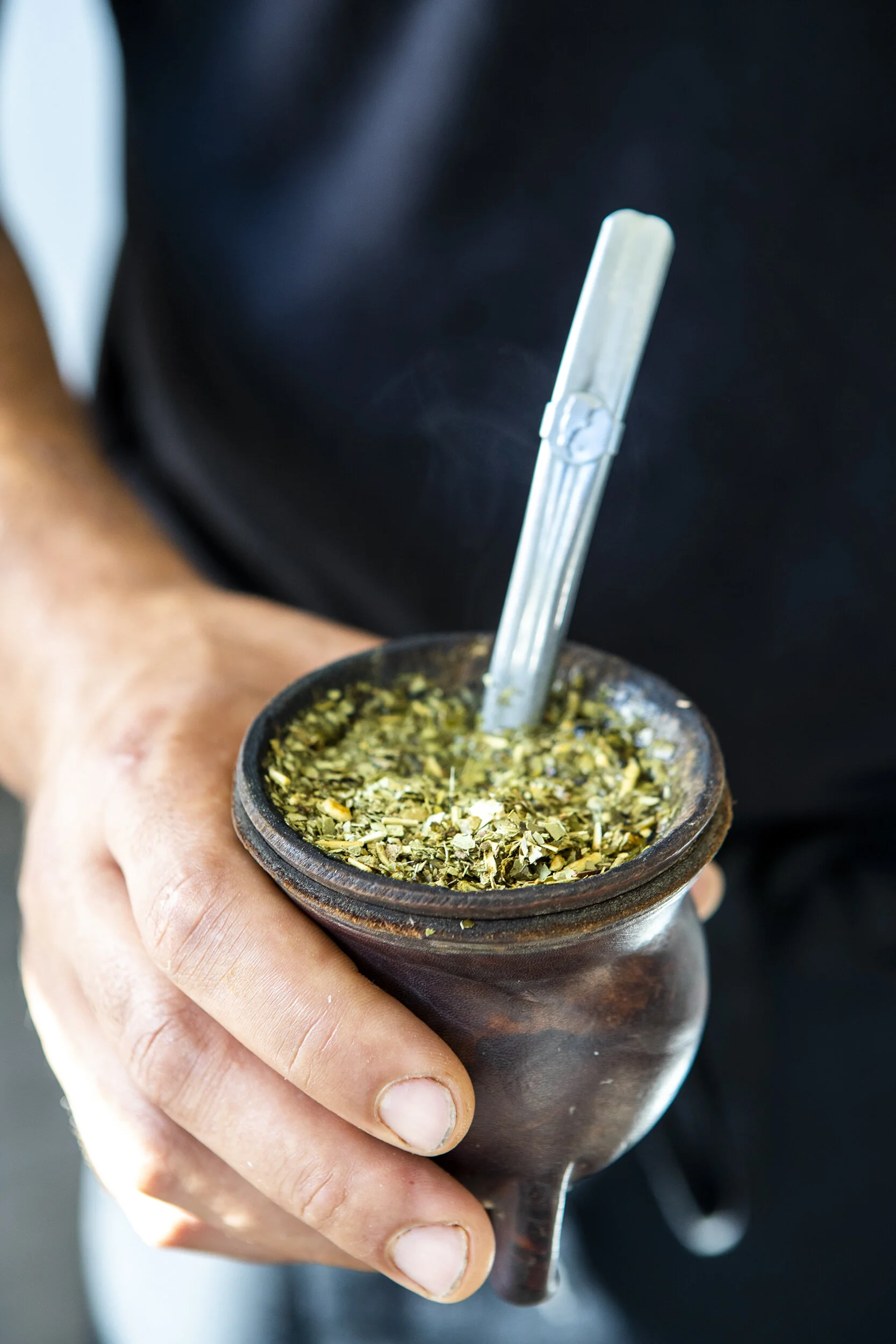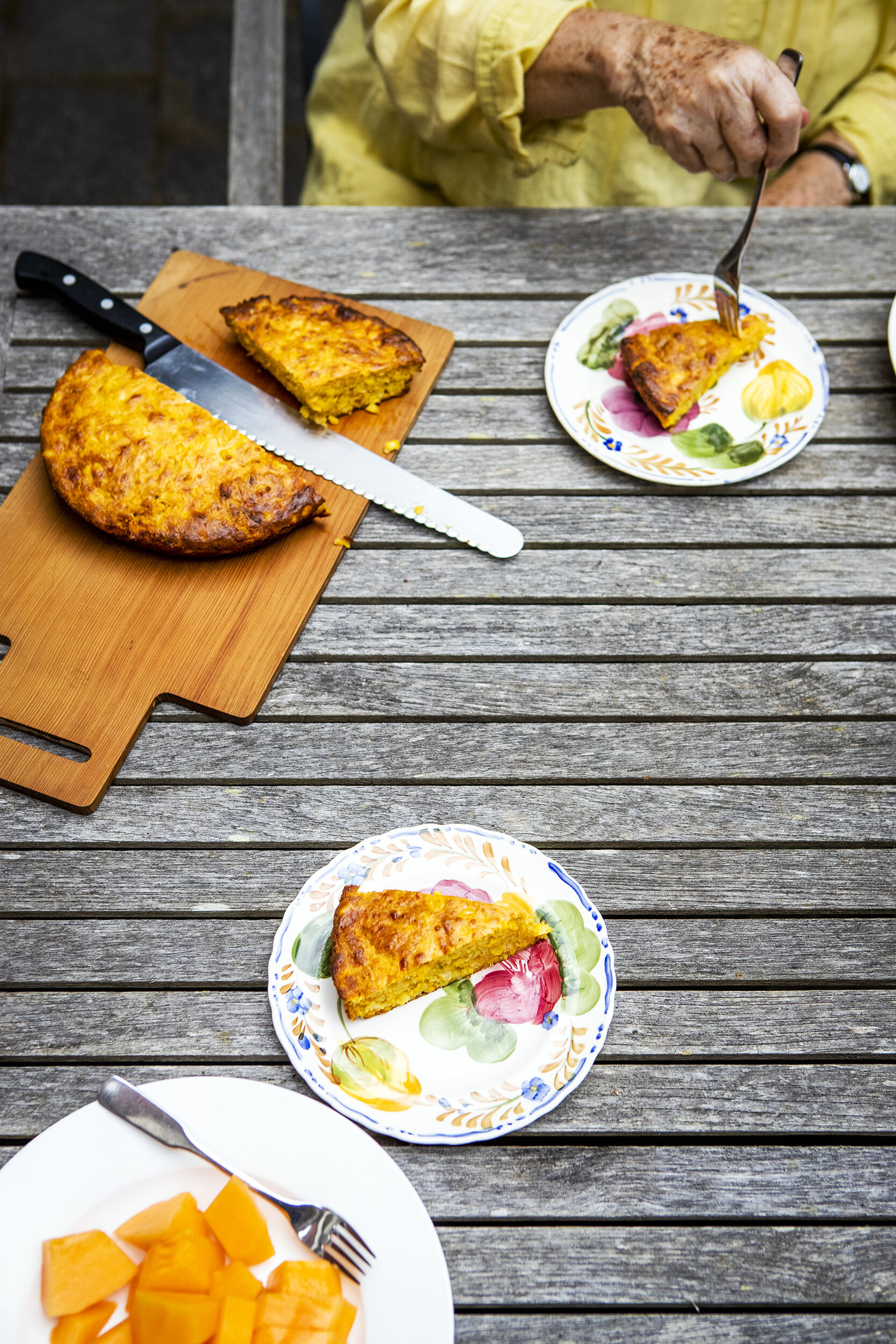Hasan Alwarhani
A few months ago we took my parents to dinner at ‘Damascus’. The little restaurant’s ambiance felt like assorted pieces of a Middle Eastern setting, pasted into somebody’s grandmother’s suburban sitting room. With a view of a bowling green.
We perched on high stools at a long table, leaning into circular platters piled high with dishes both familiar and new, tracing a delicious journey with our fingers and home-made bread. Sitting amongst the couches, with an intermittent sound track of cheering from the social-night bowlers outside, we were particularly struck by the feeling of being at home.
Chef Hasan Alwarhani has come a long way to open his own restaurant with his wife Flora. From life as a farm boy in rural Syria, to cafe work and training horses, as a 14 year old in Damascus, then on to construction work and a job as a surf instructor in a water park owned by royalty in Dubai. It was at the park that he first set eyes on Flora, a talented pastry chef from Argentina. The pair eventually settled in Wellington, New Zealand, where Alwarhani was at first employed as a swimming pool lifeguard.
Makloubi
2 cups of long grain white rice (rinsed and strained)
4 cups of water
1 red onion (finely chopped)
2 garlic cloves (finely chopped)
1 eggplant (sliced length-wise)
2 yellow capsicums (sliced in quarters, seeds removed)
200g of diced lamb
1 orange/lemon
salt to taste
Olive oil
2 Tbsp Aleppo spice (mix your own or contact Hasan to buy from ‘Damascus’)
Handful of cashews and almonds, with a few extra for garnish
Preheat the oven to 180 C
Heat a splash of olive oil in a pan over a medium to high heat. Fry the onion and the garlic, cook until translucent, stirring frequently. Stir in the spices and salt and keep mixing to toast the spices. When the spices become fragrant, add the rice and stir to combine with the other ingredients.
Pour in sufficient water to generously cover the rice (Hasan holds a dessert spoon in the pan, adding enough water to reach the beginning of the handle). Cook the rice over a medium heat until the water evaporates. When the rice is nearly cooked through, grate the zest of an orange or lemon over the rice and stir to combine.
Bake or grill the capsicum quarters until their skins start to blister and turn black. When the quarters are cool enough to handle, rub them to remove the skins.
While the oven is still hot, roast the almonds and the cashews for about 10 minutes.
Add some oil to a heavy-based frying pan and gently fry the eggplant slices until they are browned and caramelised. Pat the cooked slices dry on a kitchen towel.
In a separate pan, add some olive oil and fry the meat with salt and pepper until tender and cooked through.
Grease a bowl (the shape of the bowl will determine the final shape of the makloubi). You will also need a serving plate or tray that is wider than this bowl. Spread the toasted nuts and meat across the bottom of the bowl.
Line the sides of the bowl with alternating slices of eggplant and capsicum, covering the circumference of the bowl. Place the slices so that their edges sit up above the rim. Spoon in the cooked rice and fold the edges of the eggplant and capsicum slices over the rice.
Put the serving plate or tray on top of the bowl and gently flip both over. Carefully lift the bowl clear to reveal the makloubi, a savoury cake of meat and vege’s. Garnish with a little chopped parsley and toasted almonds.
Side salad
3 tomatoes
1 cucumber
1 spring onion
A handful of fresh mint and coriander
Juice of one lemon
Olive oil
Chop all of the herbs and vegetables. Mix the lemon juice together with olive oil, salt and a little water.
Combine everything together and serve in a separate bowl.
How did you come to be running your own restaurant in Wellington?
When I first came to New Zealand we went to the markets every weekend and we got to thinking that we should start something for ourselves. One day we had friends around and we did the Middle Eastern pizza, manakesh, and they fell in love with it - they were blown away. I was thinking maybe this is where we’re supposed to start. We honestly started the business with something like $800. We bought a pizza oven and a cheap gazebo and two tables. We made just two dishes, prepped at home and sold at the market.
Did you realise that you’d chosen a location of great cultural significance when you found a spot next to a bowling green?
We had no clue! But I felt so lucky in every way in the journey up to where we are now. It’s like everything that happened, was the best for us and the best for everyone in our community too. We found the kitchen on a space-sharing site online. When the cafe owner decided to close down, the trustees of the bowling club asked if I would like to open the place. And I was like, “hell yeah!” It’s a massive opportunity.
Was there a particular reason that you chose to share this recipe for Makloubi?
Makloubi is such a unique dish all around Syria. It’s quite famous and cooked at least once a month, but it’s cooked when there is family around or to get family together. I don’t remember a time when we had a family reunion, when one of the dishes wasn’t this. It brings people together. I knew you would fall in love with it.
Is it a recipe that varies depending on who cooks it?
We don’t even have internet in Syria. We don’t follow recipes, everyone just does their flavour. Each and every house do different things to it and I kind of like that, because I like being creative when I’m cooking, rather than just following the page. I have four sisters and too many aunties and each and every one of them is famous for doing one dish. I feel shy to cook for them, to be honest. They are really proud of what they do.
Where was food in your life as a child?
I’ve always been nosy about food and always knew my flavours when I was eating something. My mum was a huge part of it. Also my sister, who studied to be a chef. She taught me how to bring food to life. Mum taught me more about home cooking. When I started to travel, I used to be with my mum on the phone for half an hour just to get one dish done. She’s a really humble leader in the kitchen and loves to teach. She draws you into cooking, without you realising it.
Are there people or places that have inspired the way that you cook?
There are restaurants that I loved, one in Dubai and one in the middle of nowhere in the mountains of Syria. They really inspired me for their food and the way that they welcome people. My family inspire me too. I have five cousins who are chefs. A bigger inspiration would be what you want to do to people - what you want to give back. I’m a people person. I really care. I want to make sure, when they go to the restaurant, at least they feel good and they feel at home
What are your thoughts on sharing food?
In my culture we say, “If I share with you a cup of water and a little bit of salt, we are family for life”. So sharing, it’s huge for us. Sharing a meal with someone is like we are sharing the air we are breathing.





























